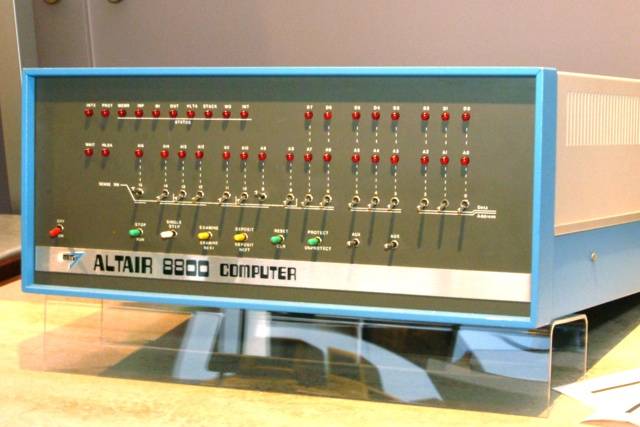A Deal That Launched Microsoft: 50 Years of Innovation

The Legacy of the MITS Altair 8800 and Its Impact on Computing
The year 1975 marked a pivotal moment in the history of computing, one that would shape the future of technology for decades to come. On July 22, 1975, Bill Gates and Paul Allen signed a deal with Micro Instrumentation and Telemetry Systems (MITS), a company that would later become synonymous with early personal computing. This agreement was to provide a BASIC interpreter for MITS’s new computer, the Altair 8800. While it may seem like a small step at first, this partnership laid the foundation for what would become one of the most influential companies in the world—Microsoft.
The Altair 8800 was not the first microcomputer, nor was it the first personal computer. However, it played a crucial role in defining what a personal computer could be. Unlike earlier machines that were built from discrete components or designed for specialized scientific use, the Altair 8800 was modular and accessible. It used an Intel 8080 microprocessor, which was a significant advancement over other systems that relied on more complex hardware setups. The machine was also designed to be expandable, with cards that could be slotted into a bus system. This design would later influence the development of the S100 bus standard, a key innovation in the industry.
One of the most notable aspects of the Altair 8800 was its affordability. While high-end workstations like the IBM 5100 were reserved for professionals and scientists, the Altair was aimed at hobbyists and enthusiasts. However, even the basic model came with only 1 kB of RAM, which meant users had to manually toggle instructions into the system using front-panel switches. To make the machine more functional, users could purchase an additional $264 memory board that expanded the RAM to 4 kB. This upgrade allowed the Altair to run BASIC, a programming language that would become central to the growth of personal computing.
The BASIC interpreter that ran on the Altair was Microsoft’s first product, known as Microsoft 4K BASIC. It was co-written by Bill Gates, Paul Allen, and Monte Davidoff, who later provided insights into the project. Today, the source code is available for study on platforms like GitHub, offering a glimpse into the early days of software development.
Ed Roberts, the founder of MITS, played a critical role in bringing the Altair to the public eye. His decision to feature the Altair on the cover of the January 1975 issue of Practical Electronics magazine caught the attention of Gates and Allen, inspiring them to start their own business. This move not only launched Microsoft but also set the stage for the dominance of BASIC in the computing world. For years, BASIC was the go-to language for programmers, influencing everything from educational tools to early game development.
The impact of the Altair 8800 extended far beyond just Microsoft. It helped propel Intel to prominence, as the 8080 processor became a cornerstone of the growing microcomputer market. Over time, the x86 architecture, which evolved from these early designs, became the standard for personal computers. This led to the creation of affordable machines based on the 8088 and 8086 processors, paving the way for the rise of operating systems like MS-DOS and eventually Windows.
Moreover, the compatibility of these early systems created a fertile environment for open-source software to flourish. Linux, FreeBSD, and other operating systems found their roots in the same ecosystem that once supported the Altair. These systems continue to thrive today, proving that the legacy of the Altair 8800 is still felt in modern computing.
Fifty years after its launch, the Altair 8800 remains a symbol of innovation and possibility. It was more than just a machine; it was the spark that ignited a revolution in technology. From the humble beginnings of toggling instructions to the vast digital landscape we live in today, the Altair 8800 played a vital role in shaping the future of computing.